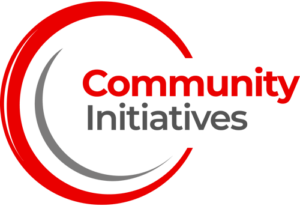
December is usually the time of year for relaxing by the fire with a nice cup of hot cocoa surrounded by family and friends, that is, unless your nonprofit work depends on fundraising. The last month of the year is when more than 30% of charitable giving takes place and 10% of all donations come in on the last three days of the month, according to the Nonprofits Source.
 Our Senior Client Services Manager, Nicki Leszman, offers some words of wisdom on end of year fundraising from her years of working alongside nonprofit leaders. We have also provided some useful resources for looking ahead to your next year of fundraising.
Our Senior Client Services Manager, Nicki Leszman, offers some words of wisdom on end of year fundraising from her years of working alongside nonprofit leaders. We have also provided some useful resources for looking ahead to your next year of fundraising.
Have your loyal supporters create individual campaign pages
Good fundraising campaigns become great when supporters create individual pages. Those individual pages should include why the nonprofit is important to them and setting a goal of money they are trying to raise on behalf of the nonprofit.
People are much more willing to give to friends and family who are raising money, then to a nonprofit in their periphery. Some good examples of this I’ve seen is with Habitat for Humanity, usually in the form of someone raising money for their trip. I have also seen it tied to an event. The supporters would then share with their social media outlets to drive more views, and hopefully donations.
Set attainable goals
Having clear, well articulated objectives helps others see the solution. They feel they can help and are more willing to contribute.
Set an external goal within your fundraising page that is reasonable and attainable, but not too low. It’s donor psychology: people tend to want to help someone reach a goal, especially as they get close.
A few examples from our partner projects this season:
Latino Outdoors’ Campaign:
“Juntos Mejor • Better together”
The FruitGuys Community Fund Campaign:
“Give and Grow Good 2020 Campaign”
The nonprofit should plan to make continued updates on progress to create a sense of urgency, and should have some people planted to make some significant gifts to help the target move along.
Donor acknowledgment and thank you notes are different
Thank you letters are a donor cultivation and retention tool. They should be as personal as possible and should detail how that person’s charitable gift was able to help you reach your mission or goal.
On the other hand, donor acknowledgment letters act more like a receipt for donors to use on their tax returns. They should be sent out as soon as possible and need to include the group’s Employer Identification Number (EIN), it should also state if goods and services were given in exchange for the donation, as that affects the tax deduction.
It is technically the responsibility of the donor to receive a donor acknowledgment letter; however, if you want to maintain a good relationship with someone willing to give to your cause, you should make the process more seamless for them by sending a letter to them without their asking.
Any time someone gives you a donation, they should be added to any database you keep for future outreach, updates and for analysis. How and when someone gives says a lot about how they may give in the future. You should tailor your appeals to those donors’ habits.
Planning Fundraising for 2020
Fundraising may get a big push at the end of the year, but it’s a year-round activity. Look ahead at grants and funding sources for the next year:
- Candid’s Find Funding Directory
- Candid’s Free Books on Fundraising
- Intersection of the Arts has a fantastic, free workshop series in the Bay Area on how to present a competitive grant application for Grants for the Arts
- East Bay Community Foundation’s Grants and Scholarship Portal
- MacArthur Foundation’s Grant Search
- Rosenberg Foundation’s Grantmaking Page
- San Francisco Foundation’s Funding Page
- Silicon Valley Community Foundation’s Local Grants
- Surdna Foundation’s Grants Database
- William + Flora Hewlett Foundation’s Grants Page
Photo by Elaine Casap on Unsplash


